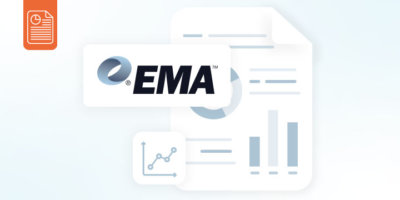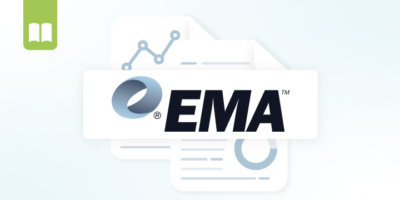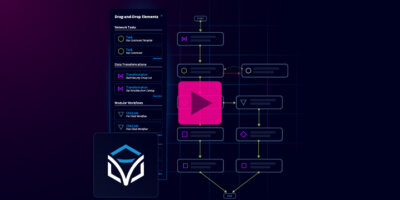As all areas of technology do, network automation has continued to evolve over the past few years. It used to be about writing fragile, one-off scripts that could eliminate simple, manual tasks. But that mentality won’t cut it anymore as other technology disciplines continue to surpass the network, impeding a holistic automation strategy. Network teams are left to find a way to keep pace with innovations across this new multi-domain landscape. Today, enterprises are pushing the envelope by using advanced analytics, off-the-shelf and internally developed software, and other techniques to automate both simple and complex network management processes.
In fact, Enterprise Management Associates (EMA) Research has found that enterprises are actively expanding their use of network automation. In the spring of 2018, 92% of network managers claimed that they have a formal initiative to expand their use of network automation, and 70% called that initiative a high priority.
Due to the high priority, EMA launched a new research project that explores advanced approaches to enterprise network automation. In this blog, we’ll break down some of the most interesting findings related to the current state of network automation in efforts to help network teams plan for 2020.
The Network Automation Mission
At the heart of network automation is understanding the purpose for these initiatives. What are the top goals teams are trying to achieve? Here are the top 5:
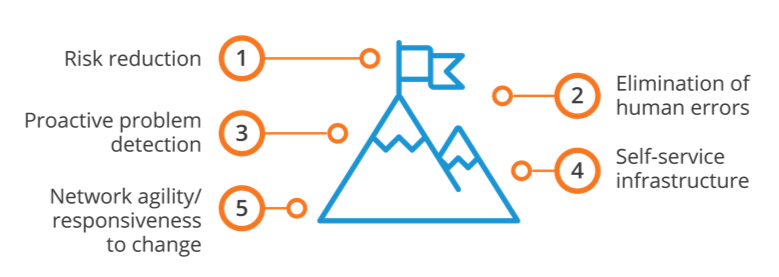
Security and compliance risk reduction took the top spot with elimination of human errors and proactive problem detection not far behind. By leveraging network automation, teams can remove the change of errors or poor decisions from introducing vulnerabilities. It can also take quick, remedial action when a possible breach or policy violation is detected.
State of Network Automation Efforts
Due to the evolving nature of network automation, the breakdown of current state efforts shows the natural progression from ad hoc scripts all the way up to AIOps driven automation.
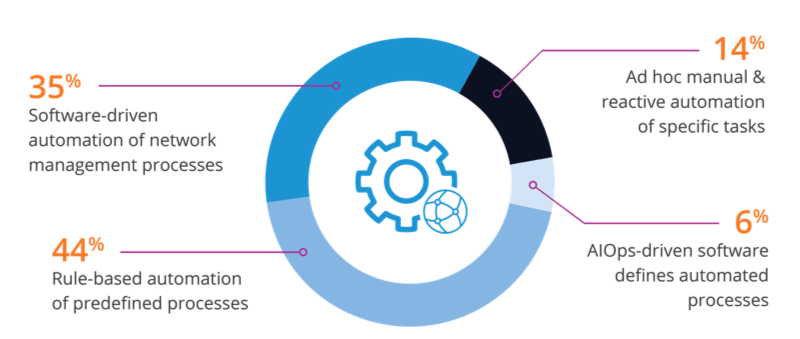
14% of enterprises are still using tools that allow them to automate tasks, rather than business processes. But the largest group describes their automation as “rule-based,” in which tools automate a set of predefined network management processes in response to prescribed events or services. It’s no surprise that the percentages of software-driven and AIOps-driven efforts continue to rise fueling the drive for modernized network automation efforts.
Top Network Automation Use Cases
While network automation spans a wide array of uses cases, these are the top 2 domains being automated along with the top task for each:
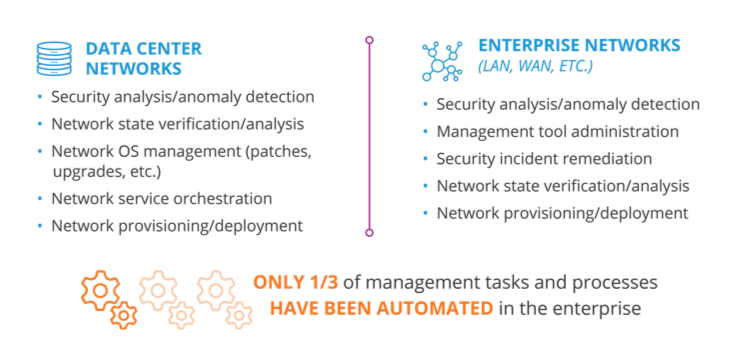
Even with the expansion of use cases across domains, only 1/3 of management tasks and processes have been automated in the enterprise. This highlights the difficulty network teams are facing executing successful and repeatable automation practices.
Source of Truth for Network Automation
Authoritative data is essential to network automation. Automation tools need a complete understanding of the network before they attempt to make changes to it. That data repository is referred to as a network “source of truth.”
Here’s a look at how enterprises are currently approaching these sources of truth:

Only 26% have a single, authoritative repository, which underscores exactly how hard it is to build such a thing. There is such a diversity of data that it’s hard to normalize all of it into a single database. That’s why it’s imperative enterprises leverage the right automation platform that can integrate directly to the network source of truth.
What’s Next?
This research from EMA revealed what enterprise peers are doing today with network automation and offers insight into where your organization fits in the landscape. Stay tuned for the next blog featuring the most interesting findings regarding the future state of network automation so your team can prepare for future innovative strategies.
If you’re too impatient, feel free to check out the full report from EMA Research, “Enterprise Network Automation for 2020 & Beyond” or check out the infographic breaking down the highlights.
Download the full report here.

![[Research] The Current State of Network Automation Initiatives, Goals, Use Cases & Source of Truth](https://www.itential.com/wp-content/uploads/2020/02/Blog-Feature-CurrentStateofNA.png)

